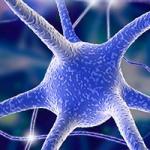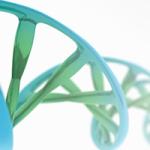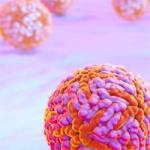
Christopher Grunseich, M.D.
Lasker Clinical Research Scholar
Inherited Neuromuscular Diseases Unit, Neurogenetics Branch
NINDS
Research Topics
The Inherited Neuromuscular Diseases Unit, led by Dr. Grunseich, is part of the Neurogenetics Branch of NINDS. The lab is a translational science lab working on developing treatments for patients with inherited forms of neuromuscular disease. Dr. Grunseich and his research group are interested in studying genetic forms of motor neuron diseases, developing clinical and molecular markers of disease progression, and performing clinical studies to evaluate candidate therapies in motor neuron disease patients. They have recently performed clinical studies of exercise and an IGF-1 pathway stimulating agent in patients with spinal and bulbar muscular atrophy (SBMA) and have used the MRI measurement of thigh muscle volume to evaluate efficacy.
The group uses patient derived cell models to better understand the biology of motor neuron diseases such as SBMA and inherited forms of ALS. To generate sufficient numbers of cells for their studies, they have developed a system to introduce inducible hNIL transcription factor (NGN2, ISL1, and LHX3) transgene cassettes into the patient- derived stem cells, which facilitates their rapid and efficient differentiation to motor neurons. These cells can then be used to better understand the disease and evaluate candidate therapies.
One of the disruptions in RNA biology that they have characterized in the patient cells is a dysregulation of R-loops. R-loops form as newly transcribed RNA hybridizes to its DNA template to form an RNA-DNA hybrid. In studying amyotrophic lateral sclerosis due to senataxin mutation, ALS4, the group discovered that patients have defects in RNA processing from dysregulation of R-loops. They characterize the distribution of R-loops in different cell types and show how the senataxin mutation results in a gain of function in senataxin's ability to resolve R-loops within patient cells.
Biography
Dr. Chris Grunseich is a Lasker Clinical Research Scholar and Investigator, and head of the Inherited Neuromuscular Diseases Unit, NINDS. He is a physician-scientist specializing in inherited neuromuscular diseases at the NIH Campus in Bethesda, MD. His lab focuses on studying markers of muscle and motor neuron pathology that can be used for detecting disease progression and evaluating efficacy in clinical studies. Dr. Christopher Grunseich completed his undergraduate studies at Brown University, and went on to receive his M.D. from SUNY Stony Brook School of Medicine in 2006. While at SUNY Stony Brook he completed an HHMI research fellowship year working in the laboratory of Dr. Gail Mandel. He then completed medical internship at St. Vincent's Hospital, and his residency training in neurology at Georgetown University. He joined Dr. Kenneth Fischbeck's research group as a neurogenetics fellow, and became a Staff Clinician in 2016, a Lasker Clinical Research Scholar in 2024 and is currently a Tenure Track Investigator. Dr. Grunseich is board certified in Neurology and oversees an active clinical research program at the NIH Clinical Center.
A main focus of his lab is understanding the disease mechanisms of two progressive forms of motor neuron disease: spinal and bulbar muscular atrophy (SBMA) and amyotrophic lateral sclerosis type 4 (ALS4). The lab seeks to understand how molecular dysfunction in these two diseases results in degeneration and develop new approaches to treatment. Establishing disease specific measures of toxicity in the muscle or spinal cord would allow for improved understanding of the disease mechanism and better approaches to evaluate therapeutic engagement at the target tissue.
Selected Publications
- Grunseich C, Miller R, Swan T, Glass DJ, El Mouelhi M, Fornaro M, Petricoul O, Vostiar I, Roubenoff R, Meriggioli MN, Kokkinis A, Guber RD, Budron MS, Vissing J, Soraru G, Mozaffar T, Ludolph A, Kissel JT, Fischbeck KH, BVS857 study group. Safety, tolerability, and preliminary efficacy of an IGF-1 mimetic in patients with spinal and bulbar muscular atrophy: a randomised, placebo-controlled trial. Lancet Neurol. 2018;17(12):1043-1052.
- Grunseich C, Wang IX, Watts JA, Burdick JT, Guber RD, Zhu Z, Bruzel A, Lanman T, Chen K, Schindler AB, Edwards N, Ray-Chaudhury A, Yao J, Lehky T, Piszczek G, Crain B, Fischbeck KH, Cheung VG. Senataxin Mutation Reveals How R-Loops Promote Transcription by Blocking DNA Methylation at Gene Promoters. Mol Cell. 2018;69(3):426-437.e7.
- Grunseich C, Patankar A, Amaya J, Watts JA, Li D, Ramirez P, Schindler AB, Fischbeck KH, Cheung VG. Clinical and Molecular Aspects of Senataxin Mutations in Amyotrophic Lateral Sclerosis 4. Ann Neurol. 2020;87(4):547-555.
- Diarra S, Ghosh S, Cissé L, Coulibaly T, Yalcouyé A, Harmison G, Diallo S, Diallo SH, Coulibaly O, Schindler A, Cissé CAK, Maiga AB, Bamba S, Samassekou O, Khokha MK, Mis EK, Lakhani SA, Donovan FX, Jacobson S, Blackstone C, Guinto CO, Landouré G, Bonifacino JS, Fischbeck KH, Grunseich C. AP2A2 mutation and defective endocytosis in a Malian family with hereditary spastic paraplegia. Neurobiol Dis. 2024;198:106537.
- Shahim P, AlQahtani A, Kokkinis AD, Kazmi N, Ezuma-Ngwu M, Misra J, Harmison G, Benoit N, Jones M, Howe E, Schindler AB, Joe GO, Grunseich C. CSF and blood neuronal injury biomarkers in spinal bulbar muscular atrophy and amyotrophic lateral sclerosis 4. Brain Commun. 2025;7(4):fcaf275.
Related Scientific Focus Areas





Molecular Biology and Biochemistry
View additional Principal Investigators in Molecular Biology and Biochemistry
This page was last updated on Thursday, August 21, 2025